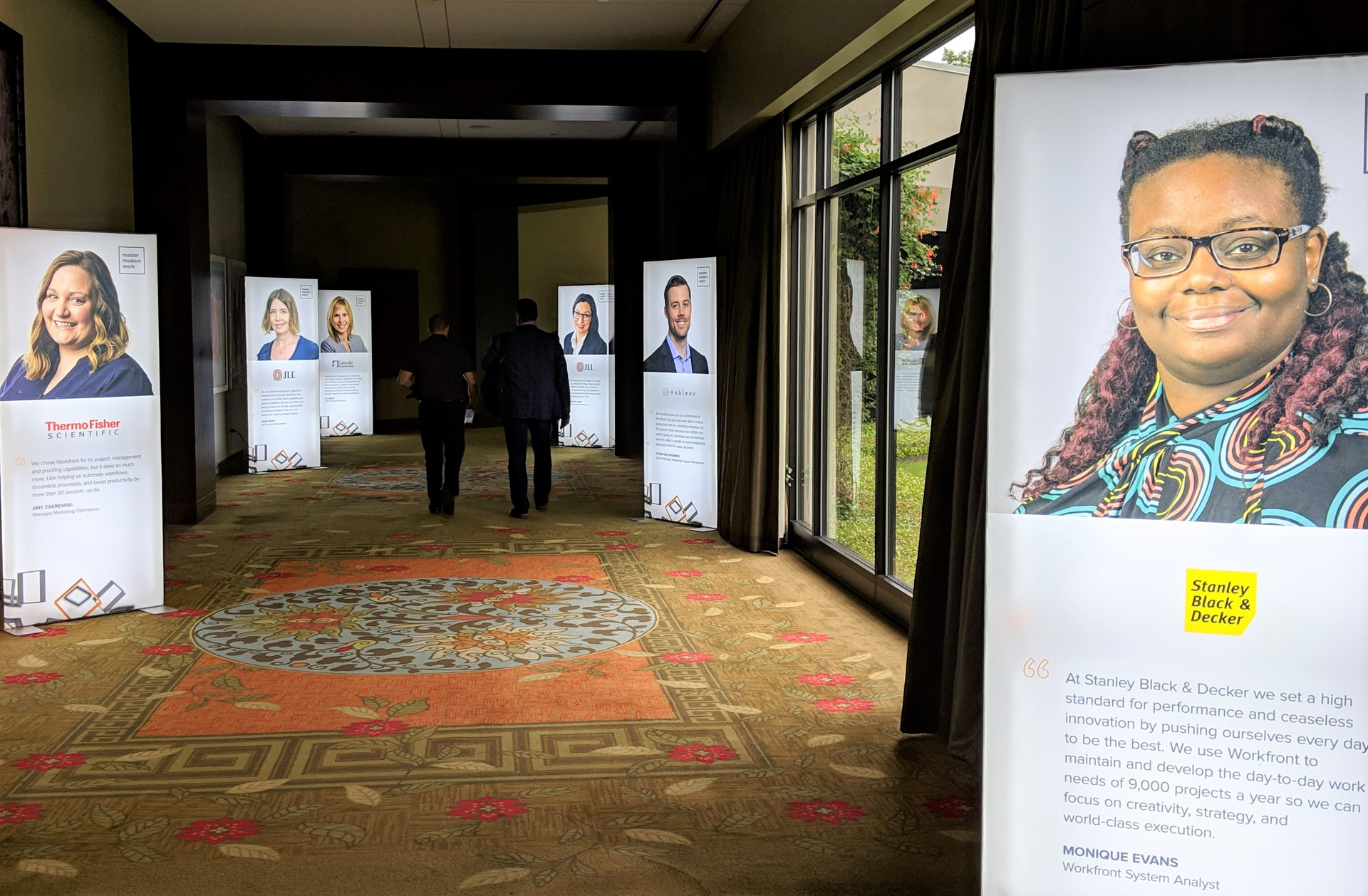As the Workfront Leap 2019 conference wraps up today, the more than 2,000 work management professionals who attended the week’s events in Dallas leave with some sure signs of where the platform is headed. As we reported yesterday, strategic partnerships with Google and Adobe enable users to manage, Workfront-style, the work that comes in through different platforms like Google Drive. This represents a next stage in the effort to meet workers where they are, a theme consistent with Workfront’s Fusion offering, announced last year, and their development of connectors that strive to provide seamless transitions in workflows. As CEO Alex Shootman said in his keynote: “It used to be that (software) functions created value. Now, it’s the work between the functions that are creating value.” To get attendees thinking this way, Shootman suggested “seamwork” as the digital answer to “teamwork” within an organization.
In nearly 200 sessions throughout the week, many Workfront customers told similar tales from the front lines, about how change brings about understandable resistance, even when the productivity benefits of a new system are obvious. Terricka Brooks, AVP for customer GM Financial, told of her experience as an army of one: “Change is important to allow organizations to grow.” She stated that her conversations with colleagues about adopting Workfront “changed the trajectory of HR at GM Financial.” They moved from fumbling through a hundred projects on Microsoft Excel to getting her team and many others within the organization to log on and use Workfront. The best analogy I heard all week came from an informal conversation I had with someone in Workfront leadership. In the early days of email, people shared photos with one recipient, or a regular group. The content was dispersed. Then, social media platforms like Facebook and Instagram were created, where the photos were uploaded in one place, and other people with access could all view the “one truth.” If a project isn’t being managed digitally, managers have to track it themselves, and coordinate and communicate with their team at every step, using an endless stream of emails and messages.
Witnessing this transformation in productivity makes some managers very enthusiastic about spreading Workfront adoption elsewhere in their organization. However, for those already very familiar with Workfront, there arise new demands for user experience. In his keynote comments, Workfront’s Chief Product and Technology Officer Steven ZoBell humorously summed up the feedback from customers, saying, “You want us to improve Workfront, but you don’t want us to change anything.” His announcement of a new Workfront user experience was equally well-received.
Key features in the new experience include personalized navigation, specific to a user’s role and preferences, as well as an interactive sidebar with a complete task overview. According to ZoBell, the improvements are a result of some 25,000 customer comments, 400 prototype revisions and two years of development with 25 designers. A beta release is scheduled for this summer.
In the second half of 2019, Workfront will also be rolling out “Project Analytics” with tools that allow managers to better understand what happened in a past project, and how to use this information in a predictive function in planning out projects in the future. “Work views will provide a clear, easy view of what happened on your project, and what caused dramatic changes for good or bad, compared to other projects,” ZoBell explained. “We also know work isn’t just tasks, but people. Are they working on what we think they’re working on?” Being able to call up this kind of data on projects and those who work on them, throughout the lifespan of the project, “helps better understand about your work and how to be successful,” said ZoBell.
Although customer testimonials and strategies played a large role at the Leap conference, some of the most instructive case studies were provided by Workfront themselves. In unveiling the new user experience, the company showed screenshots to the media that Workfront used internally. What was the project they were working on? The press release announcing Workfront’s new user experience. They also shared that they use Workfront to plan the Leap conference. Even though the conference is held in different locations from year to year, all the tasks and approvals fit surprisingly well within a template, which saves planners time when putting together the following year’s event, CMO Heidi Melin told me.
Melin also said that next year’s conference is projected to grow to a size that would have been too big for this year’s Hilton Anatole, in Dallas. The 2020 Leap will be held in the Orlando area.








